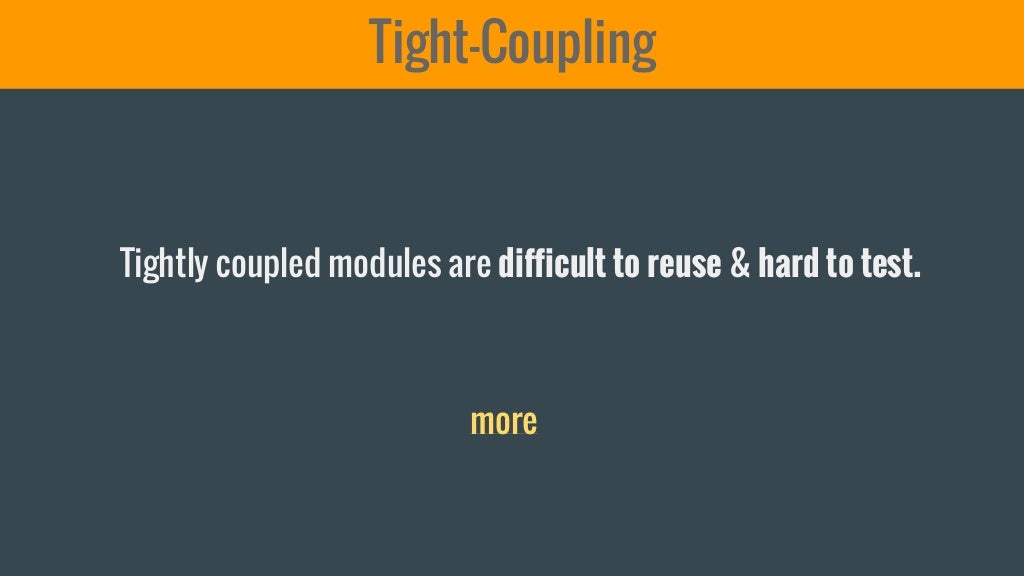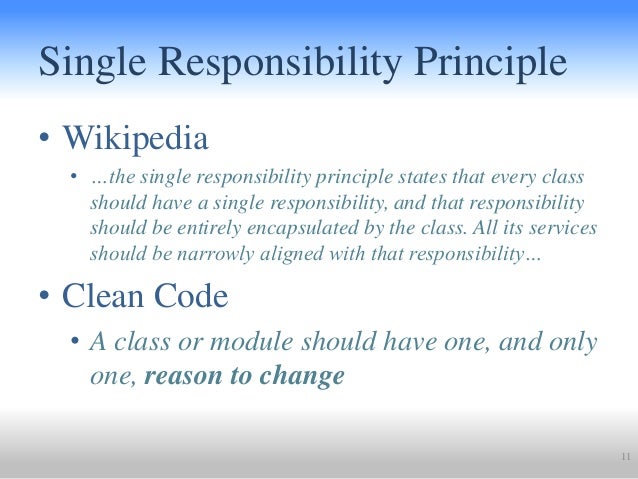
- #Single responsibility principle functions full#
- #Single responsibility principle functions software#
- #Single responsibility principle functions code#
Let’s try to deconstruct it and look at what it actually means. The Single Responsibility Principle may feel a bit vague at first. You get an email every time I post (about once a week) + access to premium content in the future.This article explains the Single Responsibility Principle (SRP): what does it practically mean? And when and how should we apply it? What Does the Single Responsibility Principle Say? The Car class is only concerned with the car itself while the Financials class only deals with financials.Įnjoyed this article? Please consider subscribing using the form below😇 Also there is more cohesion as each of the individual classes now have a clear and defined task.
#Single responsibility principle functions code#
However, this becomes very apparent in medium to large organizational codebases which have many classes and dependencies.Īlso, you may have noticed the code is now more loosely coupled than before as we have split it up into two classes. It might have been hard to see why it was a big problem to have both the car dealing and finance functionality in the same class. Secondly, the price of a BMW has changed from 100,000 to 200,000. This was updated in the Financials class. It is now possible to pay in installments if at least 2/3 of the amount is paid upfront. If you notice now, each of the classes - Car and Financials only have a single reason to change. We can easily fix this by making a separate class called Financials and implementing the changes listed above: There must only be a single reason for a class to change so the principle is violated. There are now two reasons for the Car class to change.

#Single responsibility principle functions full#

This would not only introduce bugs but also make code maintenance and future development a nightmare.

You can imagine if coupling is high there are many dependencies which means if something in one class changes that change is propagated throughout other classes that depend on it and they would have to be changed as well. If we change the functions that style the report or set the format, the function responsible to sending the report, should still work without errors. So the class responsible for sending the report should not be too concerned with the format, style, or length of the report. This means classes should not depend too much on each other. Instead, we want the functions responsible for styling the report and inserting content to be part of one class and the functions responsible for sending it, part of another.

Having all functions in one class is an example of low cohesion because the styling the report and sending it, are two different sub-tasks.
#Single responsibility principle functions software#
Let's imagine the overall task of some software is to generate a report and sending it. This means we want functions in a class to be performing tasks that are related to each other. The goal is to develop software with high cohesion and low coupling. While coupling refers to the interdependence between classes. Namely cohesion and coupling.Ĭohesion refers to the interconnectionbetween functions in a class. Therefore it is crucial for any aspiring software engineer to be acquainted with them.īefore we dive into the principle two concepts must be explained in relation to software engineering. Understanding and applying the five principle is the hallmark for good software engineering. SOLID is an acronym for five software design principles that help make software robust and maintainable. In this post we will be looking at the first of the SOLID principles. 4 min read Photo by Dorrell Tibbs / Unsplash High cohesion, low coupling and the hallmarks of quality software with SOLID.


 0 kommentar(er)
0 kommentar(er)
